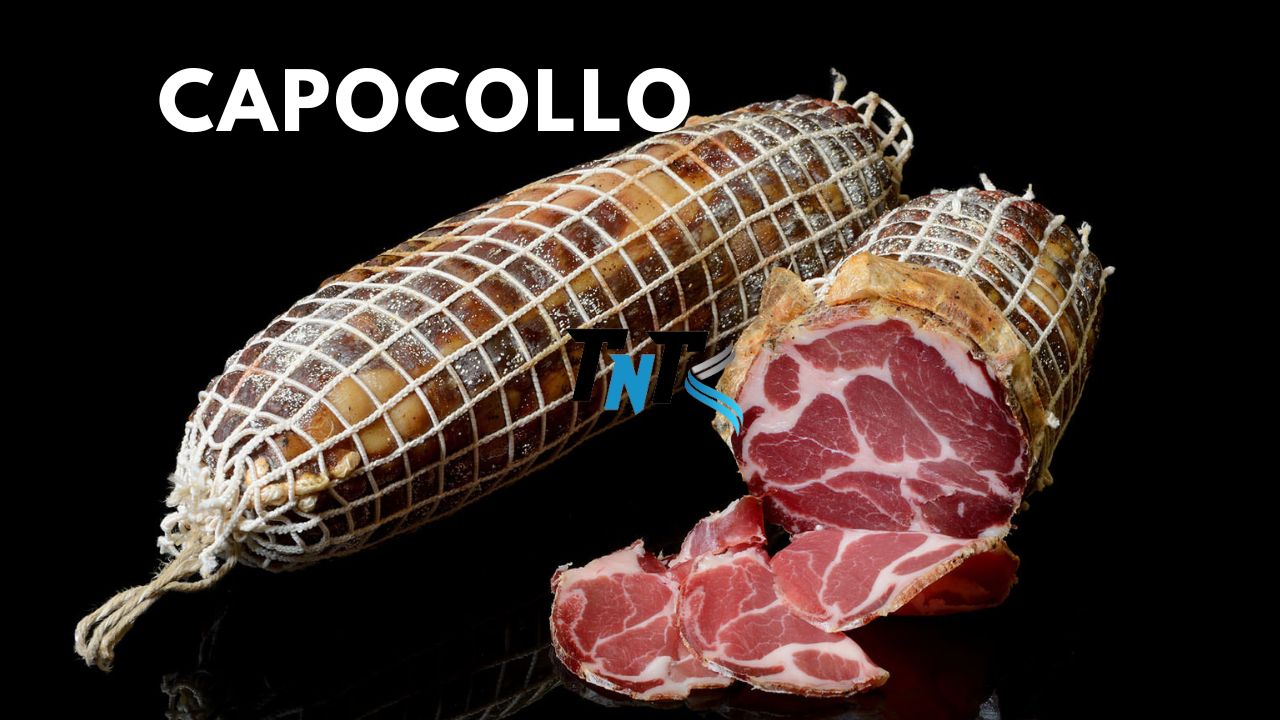Introduction of Capocollo
Capocollo is a type of cured pork meat. It comes from the neck or shoulder of the pig. It is seasoned with spices, salt, and sometimes wine. This meat has a long history. Its origins trace back to Italy. Italians have been making capocollo for centuries.
It holds a special place in Italian cuisine. It’s often served during special occasions and celebrations. In culinary traditions, capocollo is highly valued. It adds flavor and richness to many dishes. Its popularity extends beyond Italy. People around the world enjoy its unique taste.
The Art of Preparation Capocollo
Selection of high-quality pork
To start the capocollo-making journey, it’s crucial to pick the best pork. Opt for fresh, top-notch pork sourced mainly from the neck or shoulder of the pig. These cuts boast the right blend of lean meat and fat, essential for achieving the desired texture and flavor in capocollo.
Trimming and deboning process
Once the pork is selected, it undergoes meticulous trimming and deboning. This step ensures that only the prime portions are utilized, with any excess fat or connective tissue carefully removed. This process is vital in crafting capocollo with a pleasing texture and appearance.
Seasoning and marination techniques
After trimming, the pork is seasoned and marinated to enhance its flavor profile. A medley of spices and herbs is applied, with salt being a key ingredient for preservation. Some recipes may also incorporate wine to add depth to the taste. The meat is then left to marinate for a specific period, allowing the flavors to permeate thoroughly.
Curing Process of Capocollo
Traditional vs. modern curing methods
Curing, a crucial step in capocollo production, can be achieved through traditional or modern methods. Traditional methods often involve air-drying the meat over several weeks, while modern techniques may utilize specialized curing chambers. Each method brings its own nuances to the final product.
Importance of salt and spices
Salt plays a pivotal role in the curing process, drawing out moisture from the meat to prevent bacterial growth and enhance preservation. Spices and herbs not only contribute to the flavor but also add complexity and character to the finished capocollo.
Duration and environmental factors
The duration of the curing process is influenced by various factors such as temperature, humidity levels, and environmental conditions. Careful control of these factors is essential to ensure successful curing and the development of desired flavors and textures in the capocollo.
Regional Varieties of Capocollo
Italian Capocollo
Italian Capocollo, particularly from regions like Calabria and Martina Franca, showcases distinct flavors and techniques. Each region brings its own twist to the curing and seasoning process, resulting in unique taste profiles.
American Capocollo
American Capocollo has its own variations, often influenced by regional preferences and cultural influences. While staying true to the traditional curing methods, American producers may experiment with different spices and aging techniques.
Other Global Variations
It has gained popularity beyond Italy and the United States, leading to various global variations. These versions may incorporate local spices and flavors, offering a diverse range of taste experiences to consumers worldwide.
Culinary Uses Capocollo
Charcuterie Boards and Antipasto Platters
It is a popular choice for charcuterie boards and antipasto platters, where its savory flavor and delicate texture complement a variety of other cured meats and accompaniments.
Sandwiches and Paninis
It adds depth and richness to sandwiches and paninis, making it a versatile ingredient for creating flavorful and satisfying meals on the go.
Pasta Dishes and Pizza Toppings
In pasta dishes and as a pizza topping, capocollo brings a burst of flavor and texture, elevating classic Italian recipes with its savory profile.
Pairings and Accompaniments Capocollo
Wine Pairings (Red, White, and Sparkling)
It pairs well with a range of wines, including reds, whites, and sparkling varieties, enhancing the overall dining experience with complementary flavors.
Cheese Selections (Parmigiano-Reggiano, Pecorino Romano, etc.)
Pairing capocollo with various cheeses such as Parmigiano-Reggiano and Pecorino Romano creates a perfect balance of flavors and textures, ideal for cheese platters and gourmet snacks.
Bread Varieties (Ciabatta, Focaccia, etc.)
It complements different bread varieties like ciabatta and focaccia, adding depth and flavor to sandwiches and appetizers.
Health Benefits and Nutritional Value of Capocollo
Protein Content and Amino Acid Profile
It is a good source of protein and essential amino acids, supporting muscle health and overall well-being.
Moderate Fat Content and Cholesterol Considerations
While capocollo contains moderate amounts of fat, choosing leaner cuts and practicing moderation can help manage cholesterol levels and promote heart health.
Vitamins and Minerals Present
It provides essential vitamins and minerals, including B vitamins, zinc, and iron, contributing to overall nutritional intake and vitality.
Sustainable Practices of Capocollo
Sourcing from Ethical and Responsible Farms
Supporting ethical and responsible farms ensures humane treatment of animals and sustainable agricultural practices, promoting environmental stewardship and animal welfare.
Reducing Food Waste in Production
Implementing strategies to minimize food waste in capocollo production, such as utilizing by-products for other purposes, contributes to environmental sustainability and resource conservation.
Supporting Local Economies and Artisans
By supporting local producers and artisans, consumers can help preserve traditional craftsmanship and cultural heritage while fostering economic growth and community resilience.
Cultural Significance of Capocollo
Role in Italian Festivals and Celebrations
Capocollo holds a significant role in Italian festivals and celebrations, symbolizing tradition, family, and community gatherings.
Symbolism in Regional Cuisines
In regional cuisines, capocollo symbolizes local identity and culinary heritage, reflecting the diverse cultural tapestry of Italy and beyond.
Folklore and Traditional Anecdotes
Folklore and traditional anecdotes surrounding It enrich its cultural significance, passing down stories and traditions from generation to generation.
Market Trends and Consumer Demand of Capocollo
Growing Popularity in Gourmet Markets and Restaurants
Capocollo’s growing popularity in gourmet markets and restaurants reflects consumers’ increasing interest in high-quality, artisanal food products and authentic culinary experiences.
Influence of Food Bloggers and Social Media
The influence of food bloggers and social media platforms has helped raise awareness and drive consumer demand for capocollo, showcasing its versatility and appeal to a wider audience.
Future Projections and Opportunities for Growth
Future projections indicate continued growth and opportunities for capocollo, fueled by evolving consumer preferences, culinary trends, and a growing appreciation for artisanal food products.
Artisanal vs. Commercial Production
Small-Batch Craftsmanship and Artisanal Traditions
Artisanal capocollo production emphasizes small-batch craftsmanship and traditional techniques, resulting in superior quality and authenticity appreciated by discerning consumers.
Mass Production Techniques and Quality Considerations
Commercial capocollo production may utilize mass production techniques to meet high demand, but quality considerations and flavor may vary compared to artisanal counterparts.
Consumer Preferences and Discerning Tastes
Consumer preferences for capocollo may vary, with some favoring artisanal varieties for their quality and authenticity, while others may opt for convenience and affordability offered by commercial options.
Conclusion
In conclusion, capocollo stands as a timeless delicacy deeply rooted in culinary traditions worldwide. Its rich heritage, diverse regional varieties, and versatile culinary uses continue to captivate food enthusiasts.
As consumer demand grows and market trends evolve, there are promising opportunities for both artisanal and commercial producers to innovate and meet the discerning tastes of today’s gastronomic landscape. Whether enjoyed on its own or paired with complementary flavors, It remains a symbol of craftsmanship, tradition, and culinary excellence, inviting all to savor its irresistible allure.










